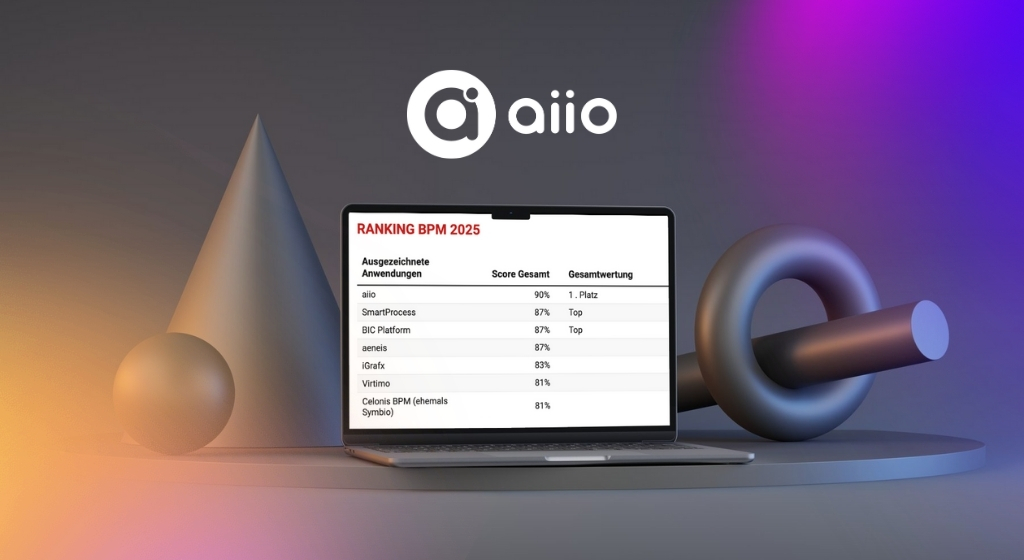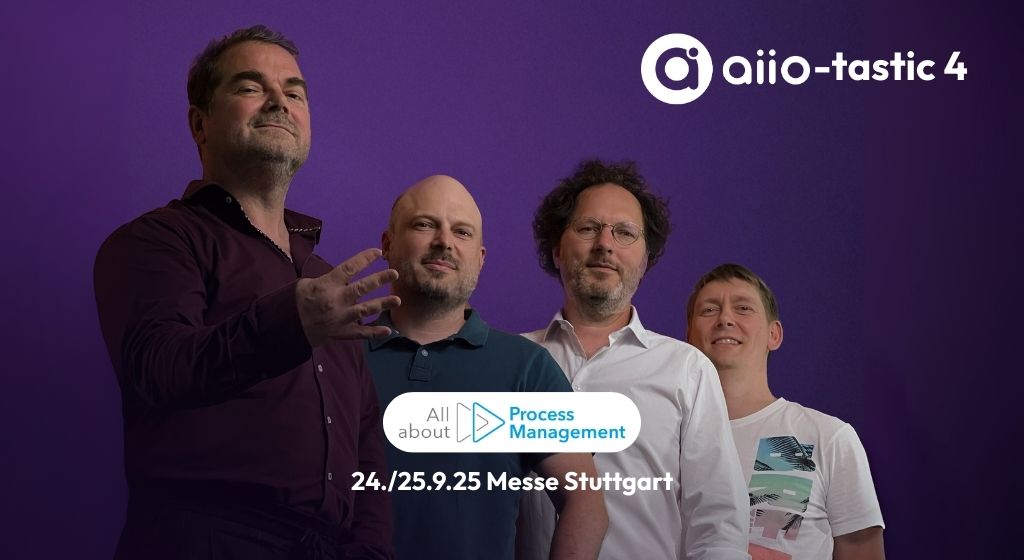Top BPM Trends: How companies can benefit from AI, sustainability and Co.

Hyperautomation, Generative AI, Green BPM and more: These are the current trends in process management:
Artificial Intelligence and Hyperautomation
The integration of Artificial Intelligence (AI) into business processes has revolutionized BPM. However, hyperautomation goes a step further and combines AI, machine learning, and robotic process automation (RPA) to automate complex business processes beyond individual tasks. This development enables rapid and precise process optimization and ensures long-term efficiency gains.
Advantages:
- Reduction of human errors
- Increased processing speed
- Improved data analysis and decision-making
Challenges:
- High initial investments
- Need for specialized expertise
Examples: By 2027, 64% of experts expect the use of AI technologies for process optimization. Companies like Siemens and IBM are already implementing hyperautomation solutions to increase their efficiency.
Generative AI in process design
Generative AI is increasingly used for creative brainstorming and problem-solving in process design and management. This technology expands the possibilities in BPM beyond traditional tools and offers new ways to design innovative processes.
Advantages:
- Promotion of creativity and innovation
- Improvement of problem-solving skills
Challenges:
- Still in its early stages, therefore limited application possibilities
- Requires a deep understanding of the underlying AI models
Examples: Companies like Google and Adobe use generative AI to develop new process models that enable innovative business solutions.
Automated Business Process Discovery (ABPD)
ABPD represents a new approach in the field of Process Mining. By analyzing event logs, ABPD enables faster and data-driven process modeling. This improves transparency and offers detailed insights into the functioning of business processes.
Advantages:
- Accelerated and precise process modeling
- Increased transparency and traceability
Challenges:
- Data quality and availability
- Complexity of data analysis
Examples: Software providers like Celonis integrate ABPD into their solutions to enable detailed process analysis and uncover optimization potentials.
Green BPM
Sustainability is not only a social goal, but is also becoming increasingly important in BPM. Green BPM aims to make business processes more environmentally friendly and reduce the ecological footprint of companies.
Advantages:
- Reduction of environmental impact
- Improvement of the company image
Challenges:
- Increased costs for sustainable alternatives
- Need for profound process redesign
Examples: Companies like Patagonia and Unilever are using Green BPM to minimize their ecological footprint while optimizing their processes.
Integration into transformation projects
The introduction of BPM is increasingly being integrated into larger digital transformation projects. This strategy promotes a process-oriented way of working and supports cultural change within companies.
Advantages:
- Holistic process improvement
- Support for digital transformation
Challenges:
- Complexity of implementation
- Need for change management
Examples: Digital transformation projects at companies like SAP and Microsoft demonstrate how BPM can be successfully integrated to promote innovation and achieve efficiency gains.
No-Code/Low-Code development
No-Code/Low-Code platforms enable the rapid and flexible development of process solutions without in-depth IT knowledge. This promotes the independence of specialist departments and accelerates process optimization.
Advantages:
- Faster implementation
- Reduced IT dependency
Challenges:
- Limited customization options
- Risk of shadow IT
Governance, Risk, and Compliance (GRC)
The integration of BPM and GRC is becoming increasingly important in order to meet complex regulatory requirements and ensure operational resilience.
Advantages:
- Compliance with legal requirements
- Increased resilience
Challenges:
- Complexity of integration
- Need for continuous monitoring
Examples: Companies like Deloitte and PwC offer comprehensive GRC solutions to ensure that business processes are compliant and resilient.
Seamless IT integration
The seamless integration of various IT systems through REST APIs is becoming increasingly important in order to enable smooth integration of BPM tools into the existing IT landscape.
Advantages:
- Increase in system compatibility
- Improved data consistency
Challenges:
- Complexity of interface development
- Security concerns
Examples: Companies like Salesforce and ServiceNow use REST APIs to efficiently integrate BPM tools into their IT infrastructure.
Conclusion
And with that, we've reached the end. These trends offer companies—especially those with young, ambitious process managers—numerous opportunities to revolutionize their work and prepare for the future. By integrating AI and innovative technologies, processes can be designed to be not only more efficient but also more sustainable and adaptable. Companies that rigorously pursue process optimization should actively monitor and implement these trends to succeed in the ever-changing business environment.
Don't hesitate, ask directly
Please use our contact form. Our team will get back to you as soon as possible.

.jpeg)


